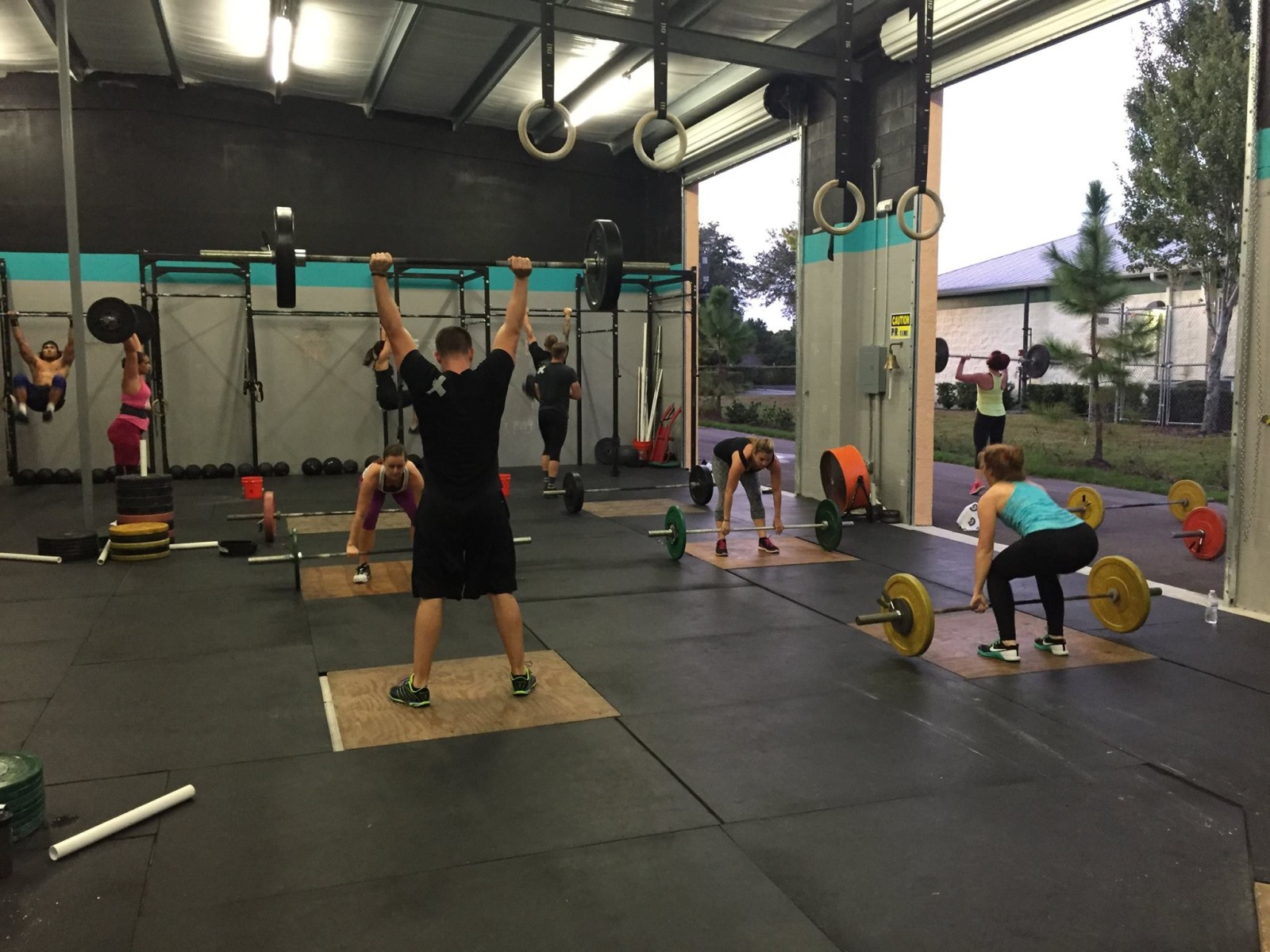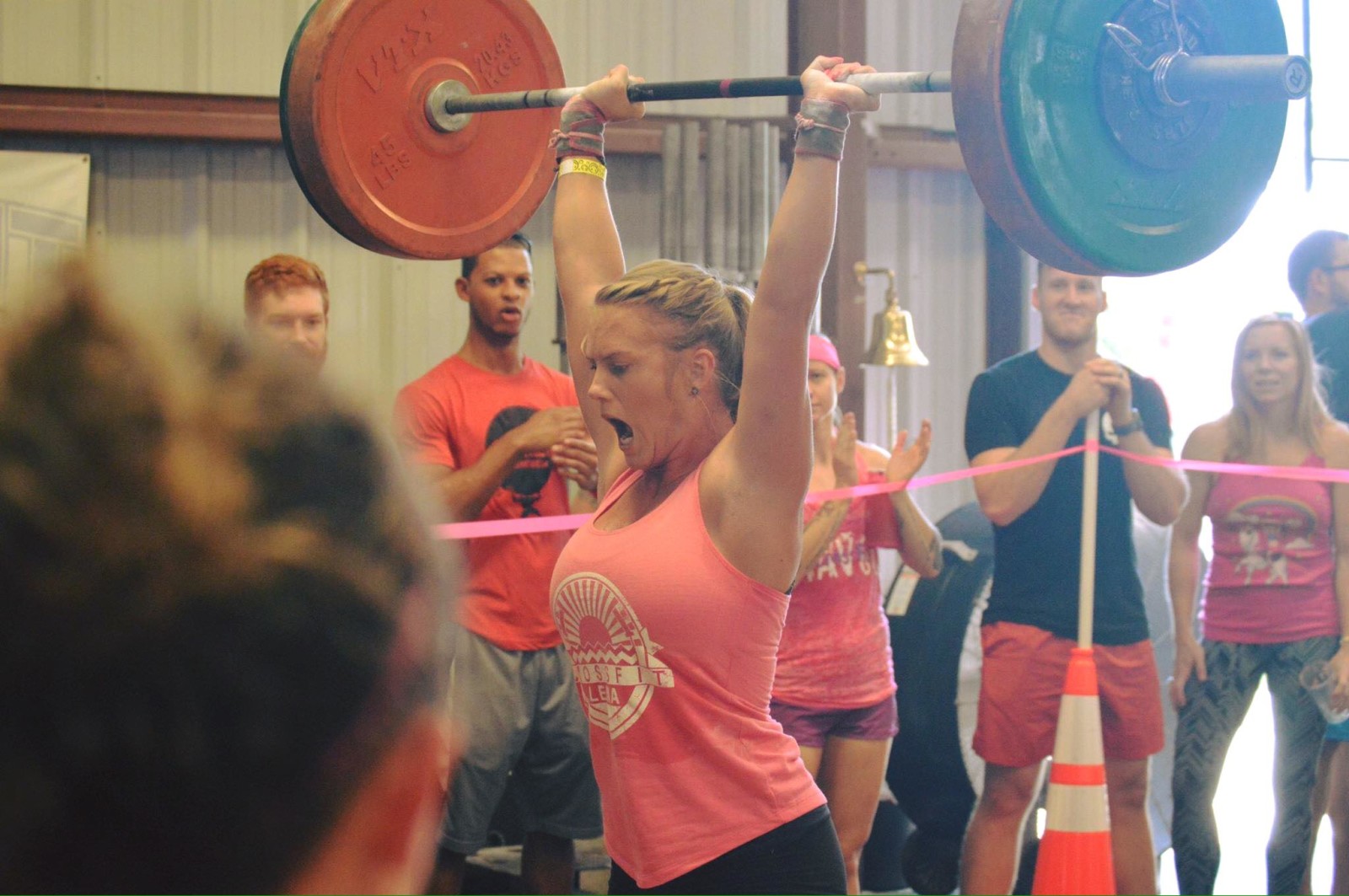We all know the feeling. We’re ready. We’re pumped. We have our knee socks on, our hair in a ponytail, our lululemon headband holding our fuzzy baby duck hair out of our face…okay, so I’m likely projecting here because I’m a girl, but dudes, you get where I’m going with this.
We walk into the box ready to kill it. Then reality sets in.
The workout:
500 of something you could do 1,000 of Rx
10 of something you might only be able to do 1 of Rx, and it’s possible you will die if you try
For time
So what do you do? Whether you’re a die-hard CrossFitter, or you’re just starting out in the sport, chances are good that you’ve been faced with deciding whether or not to scale a workout at least once. With the CrossFit Open just weeks away, many of us are in the midst of making the decision whether to sign up for the scaled or RX levels of the competition.
While sometimes it’s tricky to know what level to choose, and there are certainly exceptions to every rule, here are some great questions to ask when it comes to deciding to scale, or not to scale CrossFit exercises.
Are You Injured?
It seems like a no-brainer, but I can not count the number of times I’ve seen ego get in the way at the box.
If you’re thinking or saying anything like, “Well my back is killing me, but I know my one-rep max deadlift is 350, so I can still totally RX this workout with 150 deadlifts in it,” you’re doing it wrong.
If you’re injured, you should ALWAYS scale. Give your body the time it needs to rest and heal correctly. It is ALWAYS appropriate to scale a movement or choose another movement option to work around an injury. Some injuries don’t necessarily mean you have to take time off from the box completely, but they do mean that you’ll need to modify the workout within your current ability.
As a note along these same lines, consider muscle soreness and fatigue when you’re assessing your overall performance abilities for the day. Don’t misunderstand — I’m not suggesting sandbagging a workout because you’re sore, but there are circumstances where it might make sense to scale a workout, even if you are typically able to complete it RX.
A great example would be if, following a one-rep max lifting day where you PR’d your back squat, a WOD is programmed that requires multiple squat reps at 85 percent or more of your one-rep max. Could you do them? Probably. Would you get injured as a result of doing such intense activity on muscles and joints that haven’t yet had proper time to recover from a 1 RM lifting effort? Possibly.
Which leads us to our next question.
Are You Able to SAFELY Perform All of the Movements as Prescribed?
Safety first WOD-heads, and that is the key aspect we’re addressing in this question.
Many times, we see athletes in a WOD perform a sloppy movement. While they are able to do it, they may not be able to do it particularly well. This seems most true of the complex Olympic lifts like the snatch and the clean and jerk, but can also be seen in many gymnastic movements like handstand push ups, muscle-ups, pull ups and more.
It is absolutely appropriate during an untimed skill WOD to add weight or work on specific skills in an effort to improve technique and form.
However, once the clock starts on an AMRAP or a WOD that is designed to be fast-paced or “for time,” consider whether or not you’re able to complete the movements with perfect technique and without risk of injury.
If, as an example, you know that you tend to land either too far forward or backwards during the catch on your snatch, it may make sense in a WOD like Isabel where you would snatch 30 reps for time at 135 pounds, to scale the workout to ensure your form is perfect on the lift and there’s no risk of taking a bumper plate to the face.
Generally in a WOD, whatever movement begin with you will want to maintain through the entire workout. So spend a few minutes on the front end analyzing if you will be able to safely complete the reps.
On a Typical Day, How Many of the CrossFit Exercises Can You Perform as Prescribed?
Once you’ve determined that you can safely do the movements, the next question to ask is can you do ALL of the movements?
Honestly, this is one area where I really struggle. Just because I can do one, or even 10 clean and jerks at 95 pounds does NOT mean I can RX Grace just yet.
Again, I’m not suggesting you not dig deep and push yourself in each workout. For example, if pull ups are a super challenging movement for you and you need to drop off the bar between each rep, but you have the ability to do 10 or more of them in a row, definitely go for it in a workout like Helen where you’ll need to complete 12 reps each round.
When it comes to weight-bearing moves, consider what percentage of your 1 rep max the required load is, and how many reps you’ll need to do. If the load is 85 percent, but there are only 3 or 5 reps per round, it’s possible that you can go R for the weight in the workout. But if the load is 85 percent and there are 25 reps per round, you may need to scale so that you can perform each movement with perfect technique and get the most out of the workout.
Remember, the goal of every WOD isn’t to feel like your muscles might explode and death is eminent, which brings us to our next point.
What is the Goal of the Workout and Can You Accomplish That Goal if you go RX?

After deciding if you’re able to safely perform the movements and get through the entire workout, this question is an extremely important one to ask for a number of reasons.
As we eluded to above, not every CrossFit WOD is built equally. Some are designed to test endurance, some strength, some agility and some speed. Many are a mixture, but I guarantee that your coach programs every single workout with a goal in mind.
If the workout is Fran, a 21-15-9 couplet of pull ups and thrusters, chances are good that your coach is looking for you to go anaerobic and to challenge your speed. If asked, they may even have a goal time that they want athletes to complete the workout under.
Conversely, if the WOD is Cindy, a 20-minute AMRAP of push ups, pull ups and squats, it’s been programmed to test your endurance.
Ask about the goals and what should be accomplished in the workout when deciding to go RX or to scale. Using my Grace example from above — I can likely physically complete 30 clean and jerks at 95 pounds (RX for women), but it would probably take me 10 minutes or more to do as after the first 10 reps or so I would need a lot of rest between each rep to make it happen.
When coach programs this workout, it’s because the goal for the WOD that day is a fast, intense session that improves power and speed under the bar. I would not accomplish that goal by going RX, so for now, I don’t.
And that’s ok.
Special Considerations in a Competition Setting:
Competitions, whether the Crossfit Open or a local throw down in your area, have a few special things to consider that we’ll discuss below.
We’ve all seen the video’s of athletes who achieved their first muscle-ups, overhead squat PRs and other accomplishments during the Open. Not only are these inspiring as heck, they are amazing accomplishments that might not have been achieved without the spirit of competition propelling these athletes forward.
If you’re still deciding whether to register for the scaled or RX division in the CrossFit Open this year, I strongly recommend basing your decision on how close you are to achieving RX in the common, more difficult movements.
On the gymnastic side, it’s pretty much certain we will see muscle ups, chest to bar pull ups, and handstand push ups. If you are completely without any one of these movements, choose the scaled division. But, if you have all but one or two and are very close on those movements, consider signing up for the RX division. The Open might be just the push you need to have one of those amazing first videos of your own.
Local Competitions
Conversely, when choosing which division to enter in a local competition, you will want to check the movement standards and be very comfortable with completing all of the movements, as prescribed within the standard for multiple reps.
It is never a good idea to enter a competition where, for example, the movement standard for deadlifts is 150 pounds and that is your 1 rep max. Chances are good that you’ll be asked to perform the lift numerous times in a WOD, and it would be impossible to do that safely.
Determine which division to enter based on where your fitness is currently at, and then train like heck so that come competition day, you are able to absolutely dominate, and have a great time doing it!
To sum it all up, here at FitnessHQ we are BIG fans of scaling. We love seeing athletes succeed at CrossFit, and one of our favorite parts is its accessibility to everyone through the option of scaled movements. Be sure to take the time before each workout to decide if RX or scaled is the right option for you.


